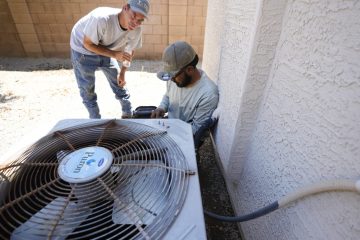When summer arrives with its scorching heat, the thought of installing an air conditioner (AC) becomes paramount for many homeowners. While hiring a professional HVAC technician is the conventional route, some DIY enthusiasts wonder if they should tackle AC installation themselves. This article delves into the pros and cons of self-installation to help you make an informed decision.
Pros of DIY AC Installation
1. Cost Savings
One of the most significant advantages of installing your AC is cost savings. By bypassing professional fees, you can save a substantial amount of money, especially if you’re adept at handling DIY projects.
2. Learning Experience
Installing an AC can be a valuable learning experience. It allows you to understand your home’s cooling system better, which can be beneficial for future maintenance and troubleshooting.
3. Flexibility
DIY installation gives you the flexibility to choose the timing and pace of the project. You can work on it during weekends or evenings, fitting it around your schedule.
4. Customization
When you install the AC yourself, you have more control over the placement and setup, ensuring it meets your specific needs and preferences.
5. Sense of Accomplishment
Completing a DIY AC installation successfully can provide a sense of accomplishment and pride in your home improvement skills.
Cons of DIY AC Installation
1. Safety Risks
Handling electrical components and refrigerants can pose safety hazards, especially if you lack experience or proper safety gear. Incorrect installations can also lead to fire hazards.
2. Warranty Concerns
Most AC manufacturers require professional installation to validate the warranty. DIY installation may void warranty coverage, leaving you responsible for repair costs.
3. Complexity
AC installation involves intricate steps like electrical wiring, refrigerant handling, and proper sizing. Without proper knowledge, mistakes can lead to inefficiency or system damage.
4. Time and Effort
DIY installation requires time and effort for research, planning, and execution. If you’re unfamiliar with the process, it may take longer and result in frustration.
5. Performance Issues
Improperly installed ACs may suffer from performance issues like inadequate cooling, uneven airflow, or frequent breakdowns, leading to discomfort and additional expenses.
Tips for Successful DIY AC Installation
If you decide to proceed with DIY AC installation, follow these tips to ensure a successful and safe outcome:
- Research Thoroughly: Understand the installation process, requirements, and safety precautions before starting.
- Gather the Right Tools: Ensure you have the necessary tools and equipment for the installation, including gauges, wrenches, and insulation materials.
- Follow the Manual: Refer to the manufacturer’s installation manual for precise instructions and guidelines.
- Check Local Regulations: Familiarize yourself with local codes and regulations regarding AC installations to ensure compliance and safety.
- Seek Assistance if Needed: Don’t hesitate to seek help from knowledgeable friends or online communities if you encounter challenges during the installation.
- Test and Inspect: After installation, thoroughly test the AC to ensure it’s functioning correctly and inspect for any leaks or issues.
Conclusion
DIY AC installation offers cost savings, flexibility, and a learning experience but comes with risks such as safety hazards and warranty concerns. Before deciding, assess your skills, knowledge, and comfort level with handling complex installations. If uncertain, consulting with a professional HVAC technician is advisable to ensure a safe and efficient cooling system for your home. Ultimately, the choice between DIY and professional installation depends on your capabilities, priorities, and willingness to take on the responsibility.




